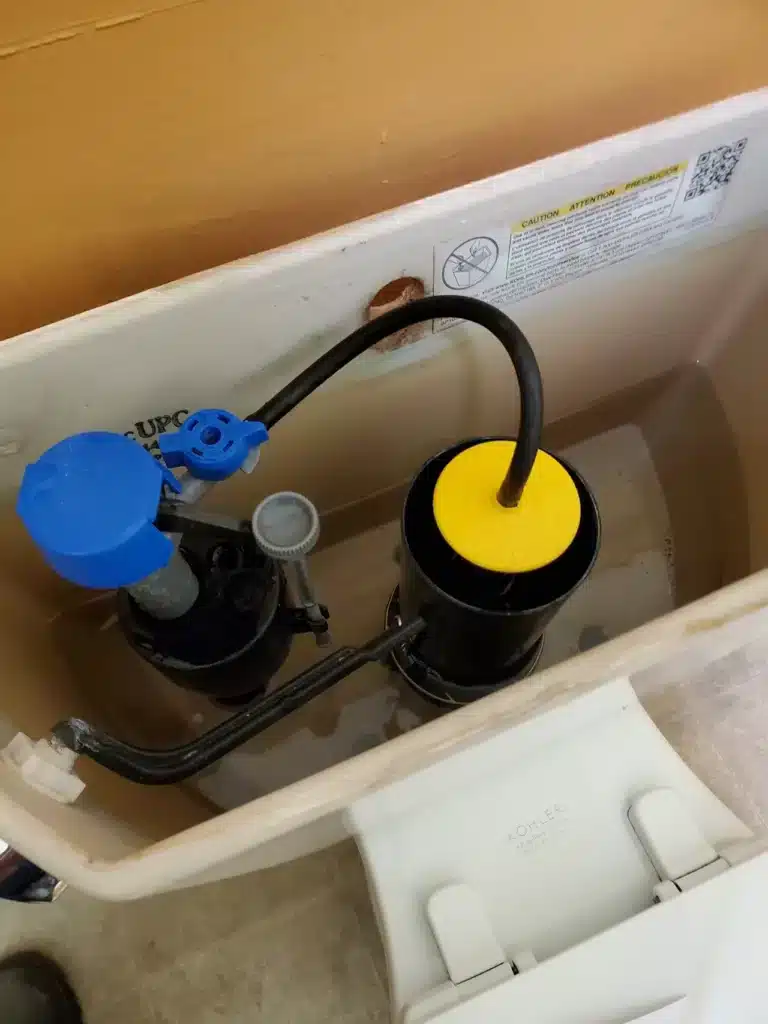A toilet that keeps refilling or running can be a very annoying and costly problem. Not only is it wasting water and running up the water bill, but there is also a risk of it overflowing and flooding your bathroom. If you’re trying to figure out why your toilet is constantly running, or you keep hearing the sound of it refilling, we are going to discuss some troubleshooting and quick fixes in this article.
The functions of a toilet
Before we get into the good stuff of troubleshooting and repairing a troublesome toilet, I’d like to run through the functions of the toilet. A toilet is made up of several components that work together to ensure a proper flush, and then refilling to the required levels in the tank and bowl. When you push the handle to flush the toilet, the rubber flapper lifts and allows the water in the tank to rush into the bowl to remove the wastewater. Once the water level in the tank lowers, the flapper drops back into position and traps the water in the tank. The fill valve float then activates and allows more water to fill the tank back to the set level. There is also a small tube that comes from the fill valve that allows enough water to get into the bowl to help with the next flush.
Common causes of a running toilet
There are several reasons for your toilet to be constantly running, and here we will discuss them and some ways to repair it.
- Dirty or worn flapper
As we discussed above, the flapper plays the very important role of keeping the water in the tank until the handle is pushed. If the flapper is old and worn out, it won’t create the tight seal required to keep water from passing through. A worn or dirty flapper will allow the water to slowly drain into the bowl. To test the flapper is holding the water back, you can run a dye test. This is performed by dropping a dye tablet or food coloring into the tank. Wait 15 minutes and if the water in the bowl has changed color, you know it’s time to change the flapper.
To change out the flapper, you should shut off the water to the toilet at the stop valve next to the toilet. Then flush the water out of the tank and remove the flapper from the flush valve and the chain from the handle. Next, you can see the size of the opening and note the make of the toilet. It is also a good idea to take the old flapper to the hardware store to match it up. Once you have the same or a compatible match, you can install it onto the flush valve and connect the chain to the handle. Getting the chain to be the right length can take several attempts. It’s best to have it a little loose, but still able to lift the flapper when the handle is pushed. Once it is in, turn on the water and fill the tank.
- Flapper chain
The flapper chain can be a source of a leaking toilet. This can sometimes happen if the chain becomes disconnected from the handle and drops into the tank. If the flapper drops to seal the opening and the chain gets in the way, water will flow from the tank to the bowl. This is quite easy to diagnose because the handle will become loose and floppy. The fix on this one is to drain the tank and reconnect the chain. It is best to check the arm for the handle to make sure the holes have not rotted out, which would just cause the chain to become disconnected again.
- Fill valve float set too high
This is usually a problem that begins when the toilet is first installed or when the fill valve is replaced. The best way to check for this issue is to remove the tank lid and check the water level. There is a line located on the flush valve overflow tube that indicates the level of the water. If the water level is all the way to the top of the overflow, the setting for the fill valve needs to be adjusted. Most modern fill valves have an adjustment screw that can be turned to adjust the water level. Older toilets with a ball cock style can be adjusted by bending the brass bar. Make small adjustments and then test by flushing the toilet.
Other possible causes
While the most common causes for a running toilet are discussed above, there are a few others that may be the cause.
- Faulty fill valve A faulty fill valve can cause the water to fill too high. If you have attempted to adjust the fill valve, and it still doesn’t work, it is to call a professional and have it replaced.
- High water pressure If the pressure coming into the tank is too high, the fill valve can malfunction and cause water to continuously run into the tank. If you suspect your water pressure is too high, call a professional to have it checked and give a solution to bring the pressure down.
- Leaking flush valve The flush valve is responsible for releasing water from the tank to the bowl. If there is a leak, it will allow water to flow into the bowl. If this is the case, replacing the flush valve will solve the problem.
What are the risks of a running toilet?
A running toilet is not only frustrating and a waste of water, but also causes a big risk of flooding your bathroom and home. The vast majority of the time, the water will just flow into the bowl and then pass through into the sewer system, but if the toilet is clogged, it has nowhere to go. The combination of a clogged toilet and a tank that allows water to continuously pass through is a disaster in the making. This is why it is important to have the toilet repaired in a timely manner.
If you’re in the Sonoma County area and are in need of a plumber to repair your running toilet or any other plumbing issue, give Yorkshire Plumbing and Drain Services a call and have a trained professional take care of it for you.






